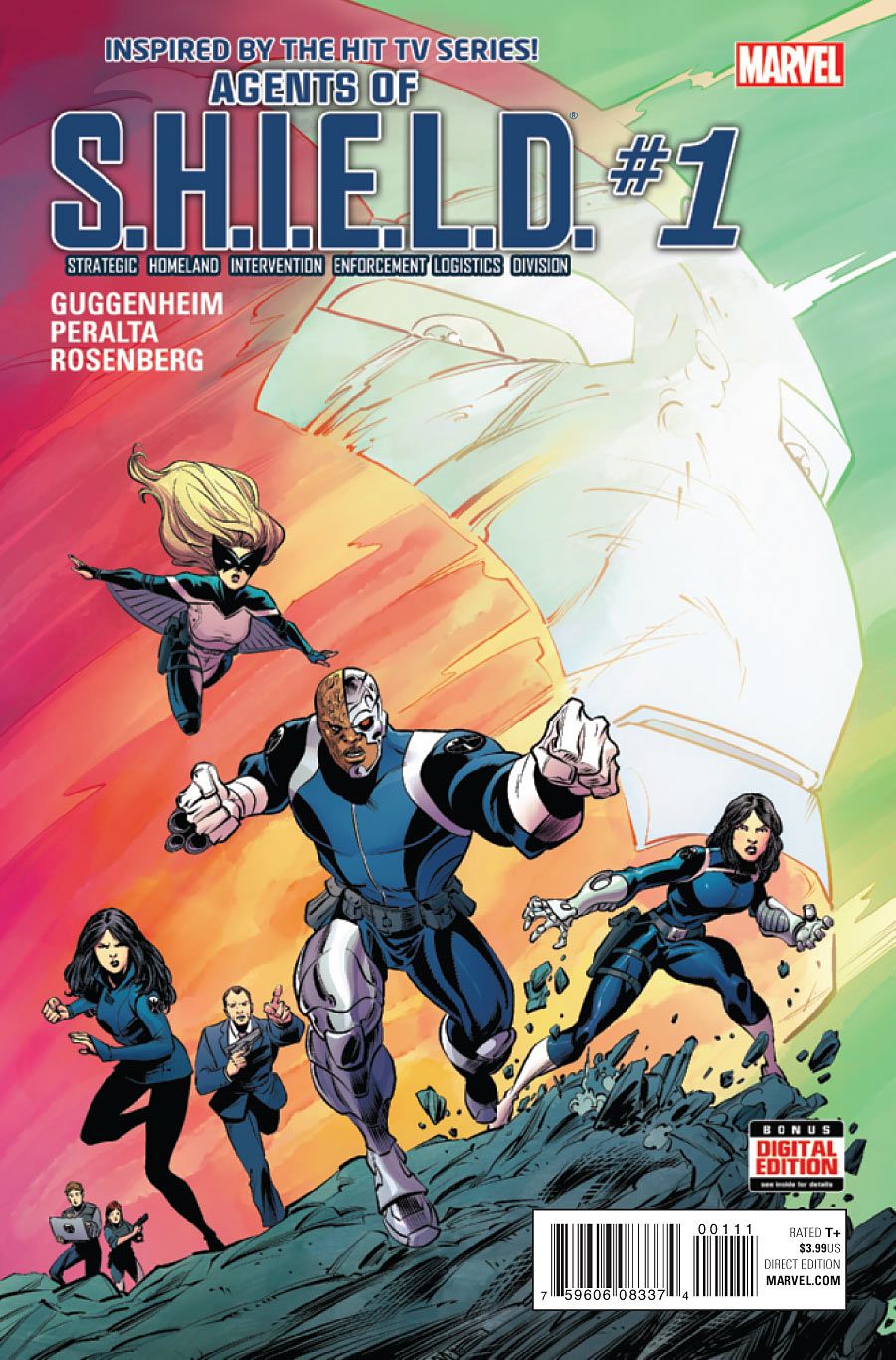Marc Guggenheim and Germán Peralta's "Agents of S.H.I.E.L.D." #1 starts with a bang, or more specifically a cinematic sequence of panels containing a "CHOOM" and "SHRAAAAMMMM" as the Pentagon is attacked; it's attention-grabbing but also follows movie conventions too closely to generate shock -- and, despite some promise, the issue reads in a similar way.
On the second page, Guggenheim plays a trick on the reader in the caption that segues into the next scene. When Tony Stark and Agent May discuss Agent Coulson's whereabouts, Guggenheim successfully plays with the reader's expectations again. Neither trick is original, but they require skill and timing to come off. Peralta's page compositions and pacing are spot-on, matching the beats of Guggenheim's script. The facial expressions are on the stiff side, but they still capture emotional shifts well in this scene. Stark's face convincingly transitions from exasperation to surprise to cocky flirtation within one page. Guggenheim's dialogue is sharp, too, and the next scene's literary shout-outs are a fun touch.
Peralta's backgrounds are thin in many panels and it's especially incongruous for domestic interiors. His shading has a beautiful brushy texture for the smoke and flames on the second page's full-page spread, but the reader isn't likely to slow down enough right past the entrance of the story to fully appreciate the quality of the linework.
Rachelle Rosenberg's palette is dominated by neons and cold yellows and oranges. The whole comic feels cold and dominated by computer-generated displays and industrial spaces. Even the cozy romantic scene in Georgetown feels curiously spare and without heat, despite the slight uptick in the temperature of Rosenberg's palette. Peralta's stiff faces are at their worst here; Lola Daniels and Coulson don't have any chemistry on the page. The panel composition is likewise awkward here. The horizontal lines that bisect the standing couple don't guide the reader's eye down the page or serve an obvious narrative purpose. The confrontation scene that follows the romantic reunion is stronger but doesn't match the crispness of the opening scene.
Guggenheim's characterization falls in line with the TV show for the best-known characters, especially May and Coulson, but his take on Leo Fitz is going to feel abrupt to readers who follow the show.
The rest of the cast is thinly developed at this point, but Guggenheim is more focused on exposition. Three plotlines are set in motion: the theft of the quantum drive and Coulson's pursuit of the mysterious villain, Jemma Simmons' alarming discovery and a new romance.
The two romantic scenes in "Agents of S.H.I.E.L.D." #1 are the thinnest and least successful portions of the story. The main plotline features no further surprises after Guggenheim's double trick in the opening scene. The revelation about the contents of the stolen "quantum drive" feel stale. The Marvel Universe has had this crisis before, and the stakes don't feel real, but the Dr. Jemma Simmons' discovery -- although it uses a similarly well-worn trope -- has emotional impact because of Peralta's clever use of perspective and the dramatic friction Guggenheim creates in the gulf between Gemma's clinical manner of speech and the content of her report.
"Agents of S.H.I.E.L.D" #1 doesn't add much yet to the franchise yet, but this debut shows flashes of promise. The plot and action move along predictably, but there is both verbal and visual energy in the pages and the team feels cohesive.

